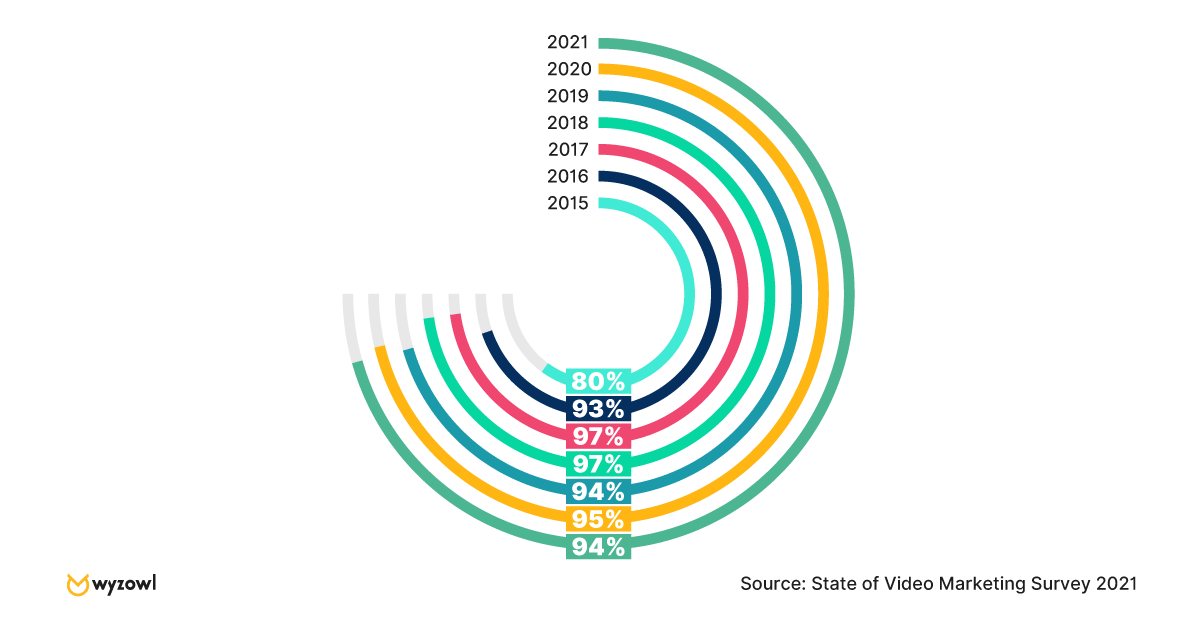Video Marketing Statistics 2021
The State of Video Marketing
We gathered the stats below by surveying 813 unique respondents in December 2020. Our sample included both marketing professionals and online consumers. We separated these groups with a preliminary question, ensuring that respondents were only asked to answer the questions relevant to them. Our trend data is based on 7 years of asking these questions.
Citation Policy:
Please feel free to use these statistics in any commercial or non-commercial capacity. If you use the statistics we require a link to Wyzowl
01
Video marketing overview
How many businesses use video as a marketing tool – and how do they use it?
View trend chart
View trend chart

02
2020 & the global pandemic
How have the unprecedented events of 2020 affected demand for video?
Of these, 51% said this was because video had become easier to create in-house.
47% said video was made necessary by new challenges, including the coronavirus pandemic.
44% said it was because video had become more affordable.
39% said it was because it had become quicker and less time-consuming to create video.
36% said it had become easier to convince others in the business on the value of video content.
19% said they had become clearer on the ROI of video and this had given them confidence to invest.
03
The ROI of video marketing
How do marketers feel about the return they get on their investment in video?

04
The audience view: Consumers and video
Putting aside what marketers think about video – how do their audiences feel about it?
05
Measurement of success
What are people trying to achieve through video – and how do they define success?
When asked how they measure success, video marketers responded as follows:
– The most commonly cited metric was video engagement (including shares, comments, likes, etc.) 63% of video marketers responded this way.
– Next up was video reach – determined by number of views – with 58%.
– Leads and clickthroughs were next, with 55%.
– Customer engagement/retention were a consideration for 43% of video marketers.
– Brand awareness/PR was next up with 42%.
– A surprisingly low 29% of video marketers said that bottom line sales were part of their evaluation of video ROI.
– 4% cited a range of other determining factors including employee onboarding quality, charitable donations received, sales calls booked and verbal feedback.
While others reported that video ROI was entirely anecdotal, and/or not measured at all.
06
Non-video marketers
Of those marketers who don’t currently use video, the reasons are diverse…
07
Video platforms
Which platforms do video marketers use – and which ones do they find most effective?
08
Looking forward: Usage & channels
How do marketers plan to use video in 2021?

09
Year over year trends
We’ve conducted an annual survey every year since 2015. What does comparing our data, year over year, reveal about the general trajectory of video marketing?
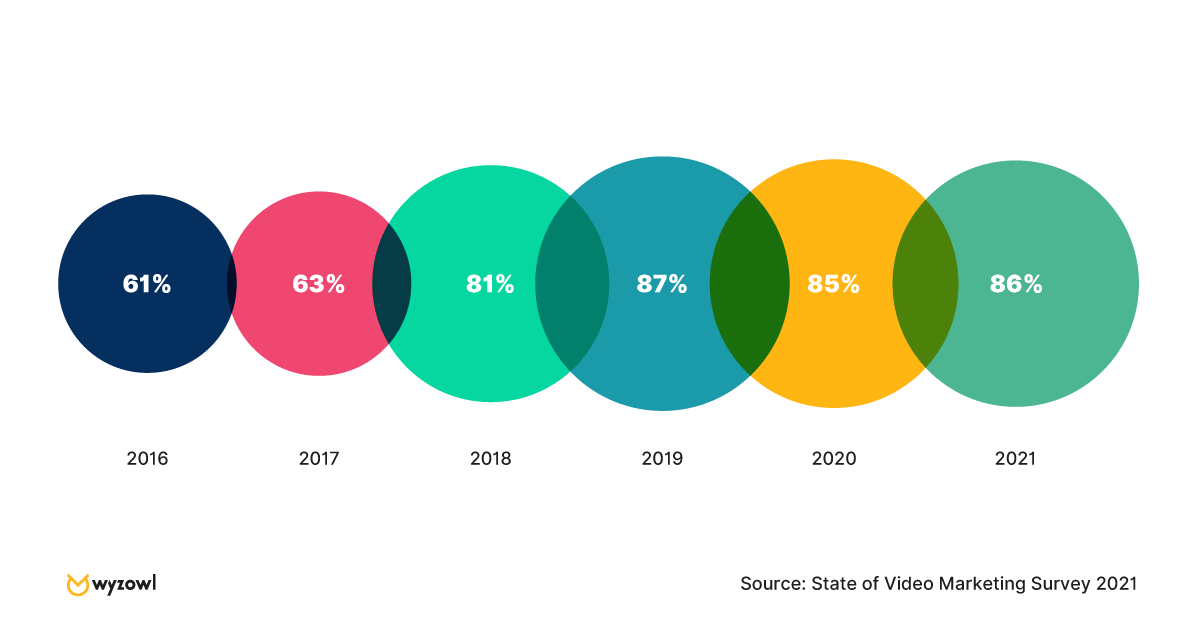
Does your business use video as a marketing tool?
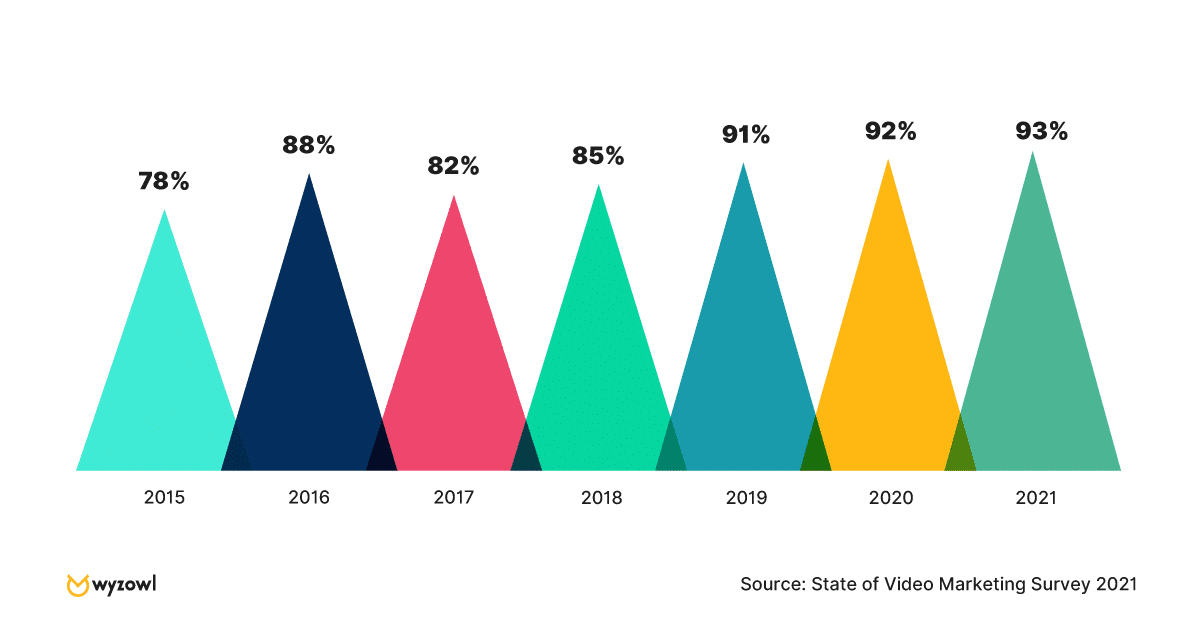
Is video an important part of your marketing strategy?
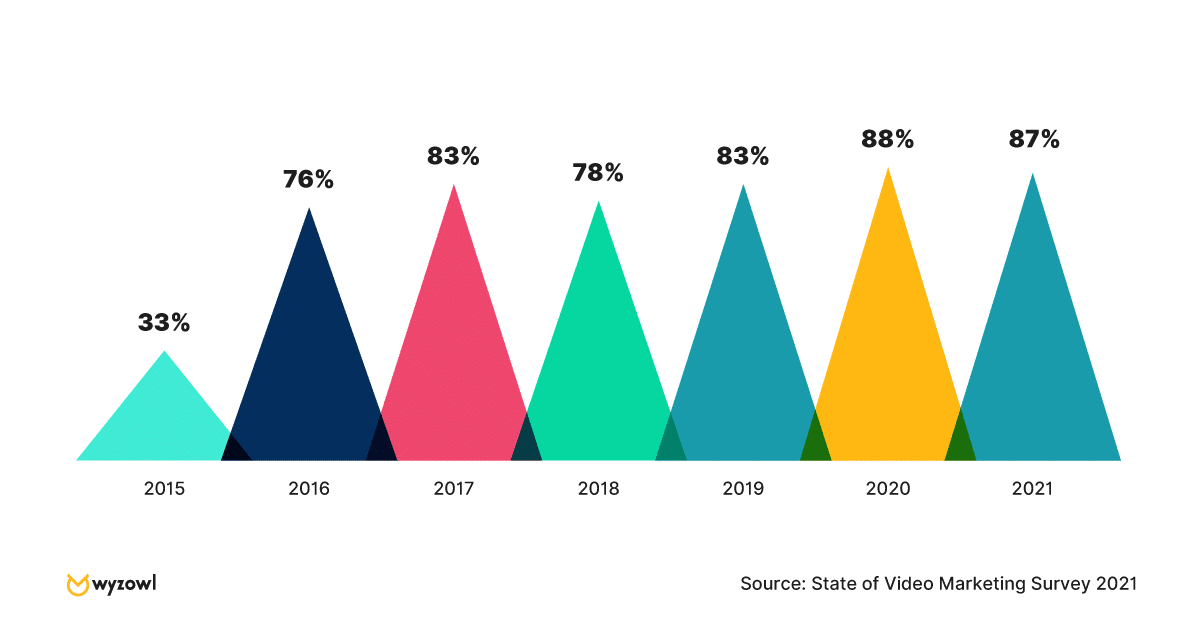
Does video give you a positive return on investment?
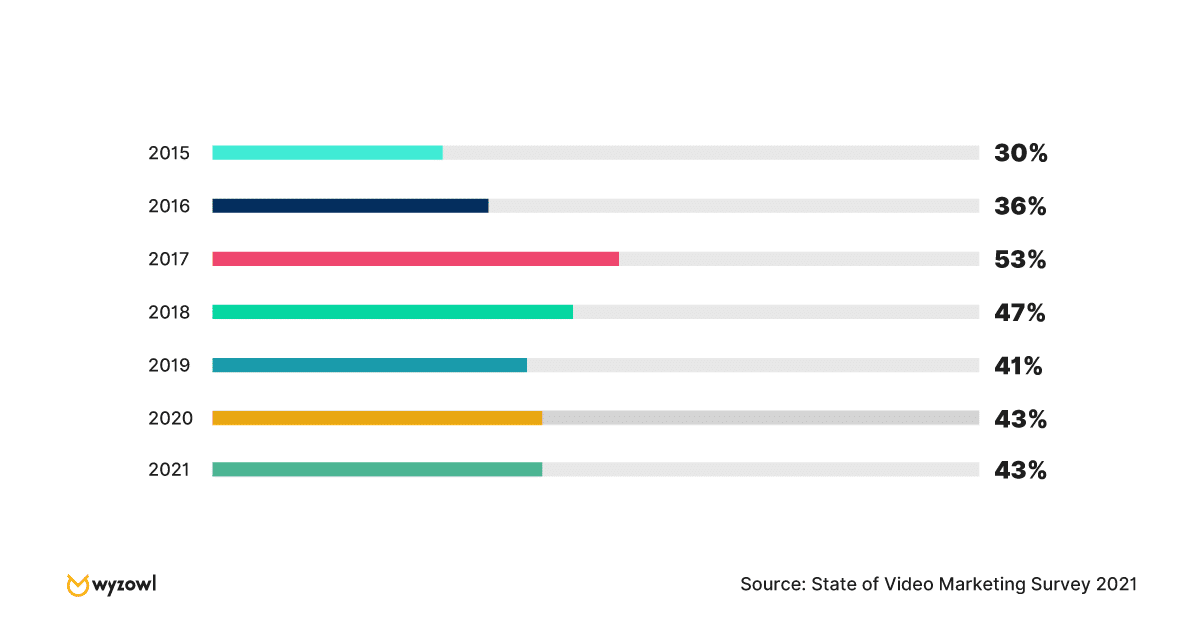
Has your video marketing reduced the number of support calls you’ve received?
